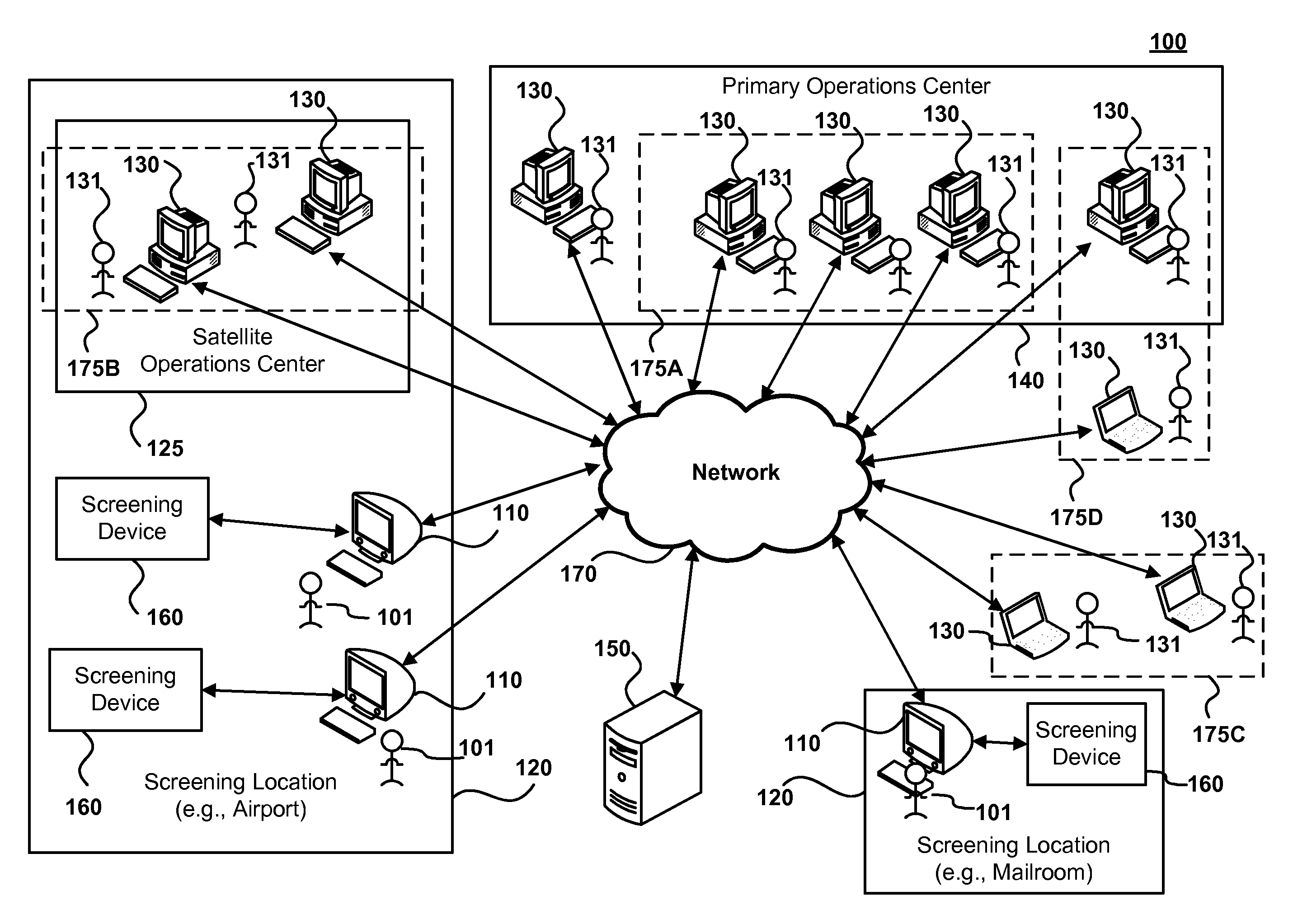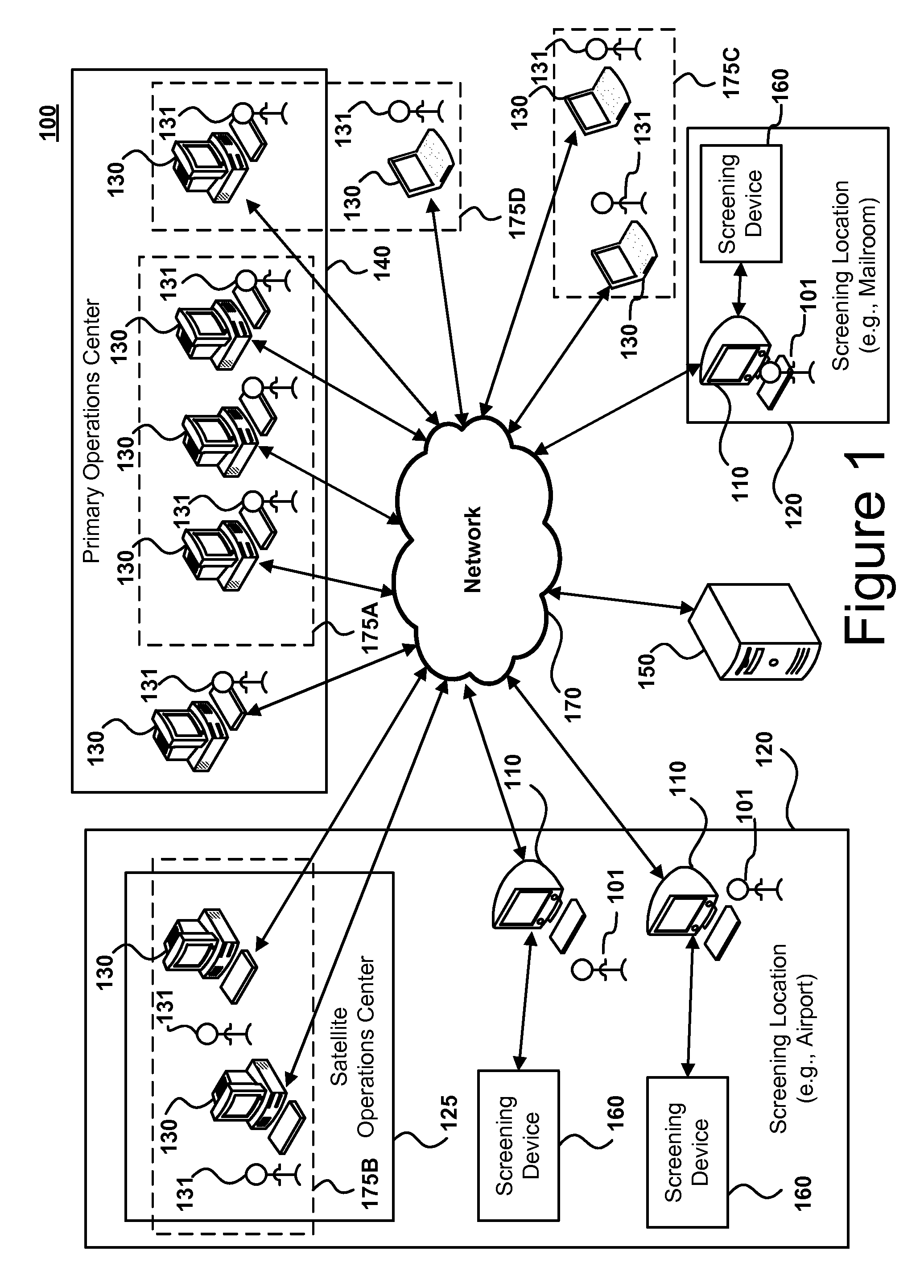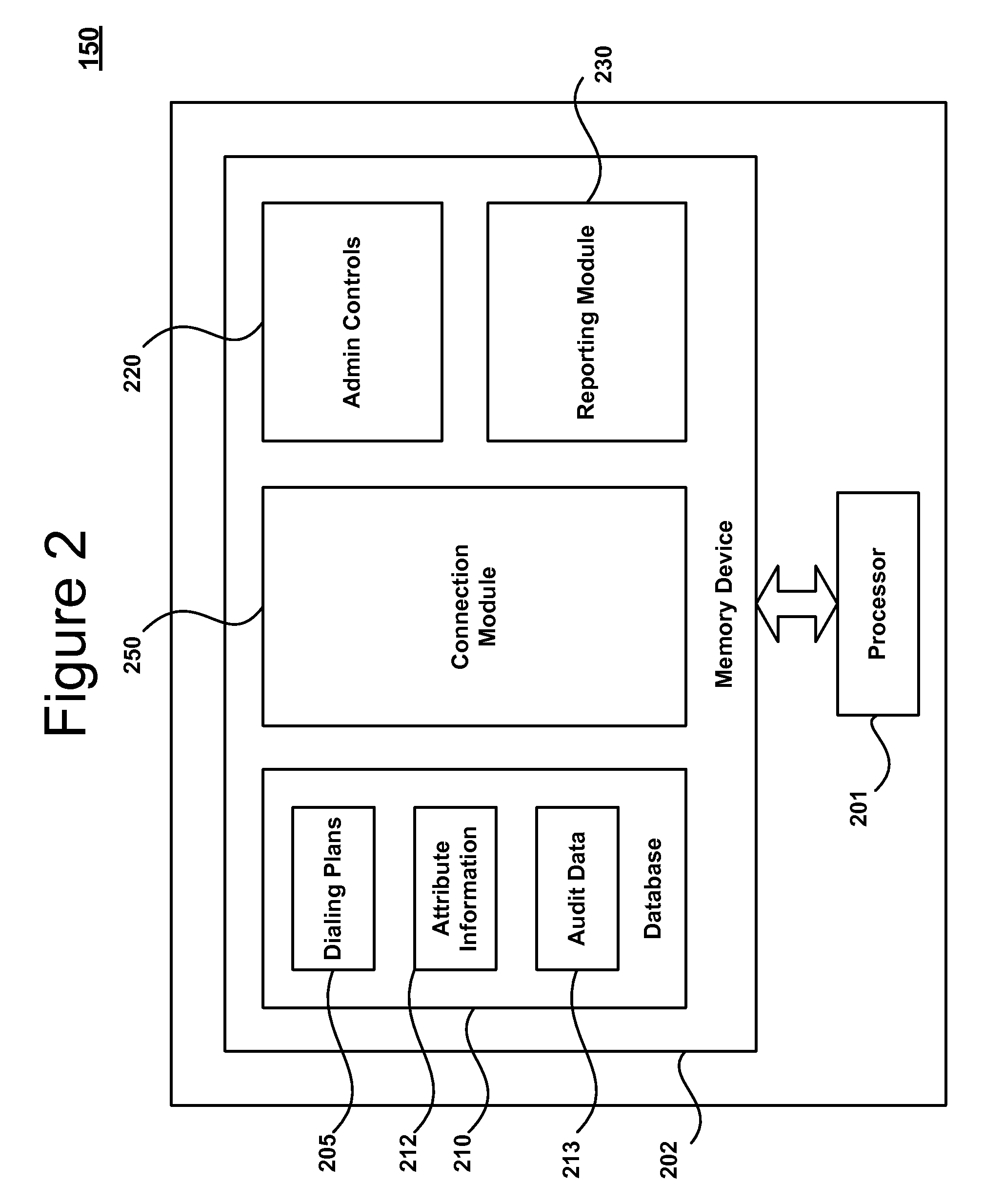Systems and methods for facilitating remote security threat detection
a technology of remote security and detection methods, applied in the direction of transmission, electrical equipment, etc., can solve the problems of time delay, unnecessary delays for both screening operators and individuals, and ineffective implementation of such a system, so as to eliminate scalability problems and geographic limitations, facilitate integration, and efficiently establish connection
- Summary
- Abstract
- Description
- Claims
- Application Information
AI Technical Summary
Benefits of technology
Problems solved by technology
Method used
Image
Examples
Embodiment Construction
[0036]In the following description, reference is made to the accompanying drawings that form a part hereof, and in which is shown by way of illustration specific embodiments in which the invention may be practiced. It is to be understood that other embodiments may be utilized and structural changes may be made without departing from the scope of the present invention.
[0037]A threat detection system is disclosed for analyzing and detecting security threats at one or more screening locations (e.g., airports, seaports, Customs checkpoints, mailrooms, security checkpoints, stadiums and other venues or high-risk environments). Screening devices at the screening locations may be utilized to analyze and inspect items (e.g., cargo, bags, packages, luggage, mail, shipment containers or other items) to determine whether an item is or contains a security threat. Similarly, the screening devices may also be utilized to analyze or inspect individuals to determine whether the individuals include ...
PUM
 Login to View More
Login to View More Abstract
Description
Claims
Application Information
 Login to View More
Login to View More - R&D
- Intellectual Property
- Life Sciences
- Materials
- Tech Scout
- Unparalleled Data Quality
- Higher Quality Content
- 60% Fewer Hallucinations
Browse by: Latest US Patents, China's latest patents, Technical Efficacy Thesaurus, Application Domain, Technology Topic, Popular Technical Reports.
© 2025 PatSnap. All rights reserved.Legal|Privacy policy|Modern Slavery Act Transparency Statement|Sitemap|About US| Contact US: help@patsnap.com



